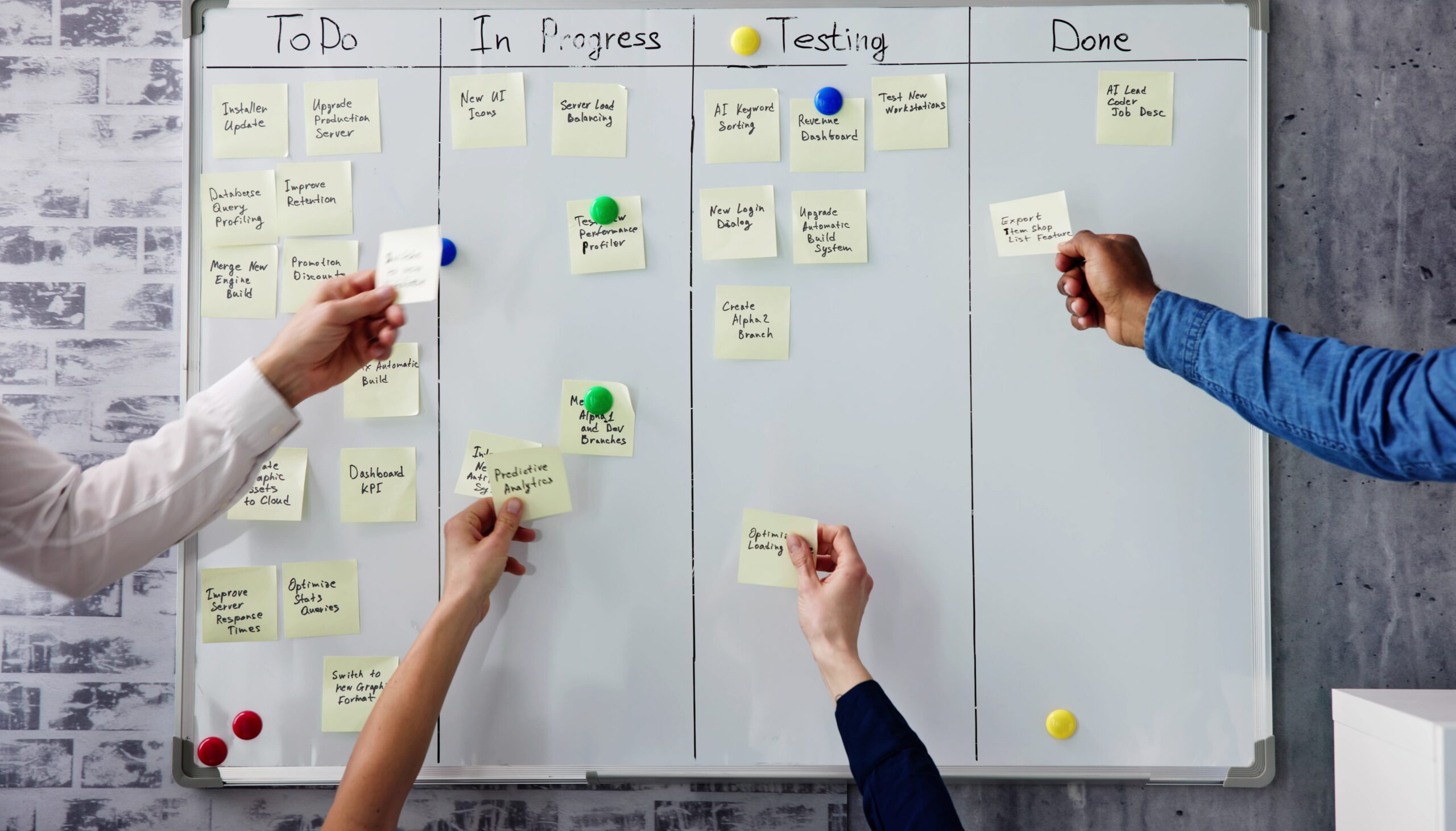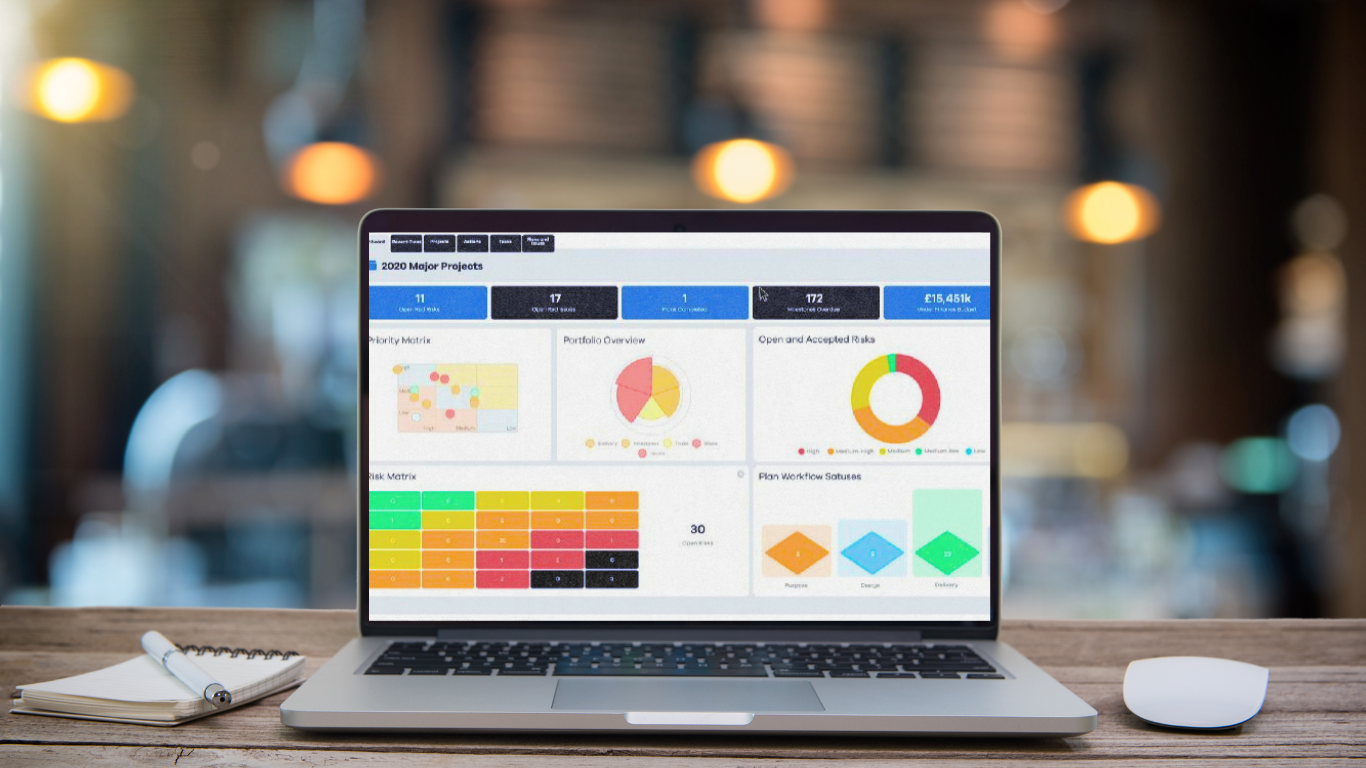Lean management methodologies focus on maximising value while minimising waste. Learn how lean project management can improve efficiency and help your teams deliver more with less.
Lean Project Management is a transformative approach to project execution, inspired by the Toyota Production System (TPS) and its groundbreaking lean manufacturing techniques developed in post-war Japan.
Born from the need to eliminate inefficiencies and maximise customer value, Lean Project Management has evolved into a powerful project management methodology used across industries today, from software development to product development.
Rooted in lean thinking, the approach prioritises creating value by addressing customer needs, focusing on efficient workflow management, and reducing the types of waste—muda (waste), mura (unevenness), and muri (overburdening)—that compromise productivity.
Central to Lean Project Management are a few core principles: identifying value, mapping the value, streamlining processes, creating continuous flow, establishing a pull system, and pursuing continuous improvement (often using PDCA, or Plan-Do-Check-Act).
These principles, championed by lean methodology, streamline work by eliminating bottlenecks and reducing lead times, which enables teams to deliver high-quality deliverables that align with customer demand.
Tools like Kanban boards, Gantt charts, and value stream mapping bring visibility to workflows, allowing project managers and team members to prioritise tasks, track milestones, and quickly address inefficiencies.
When integrated with project management software and automation tools, Lean Project Management ensures agile, responsive project lifecycles that adapt to shifting priorities.
By fostering continuous improvement and eliminating waste, Lean Project Management positions organisations to meet their strategic goals efficiently, enhancing customer satisfaction and driving sustainable value.
As companies increasingly rely on digital integrations to enhance efficiency, Lean Project Management’s emphasis on agile methodology and iterative progress makes it an indispensable approach for modern, dynamic work environments.
Follow along to discover the five benefits of implementing a lean approach to project management.
Lean Project Management drives productivity by relentlessly focusing on waste reduction, workflow optimisation, and accelerated project timelines.
At its core, Lean Project Management transforms traditional processes by prioritising only high-value tasks and eliminating activities that don’t directly contribute to the customer value—a concept central to the Toyota Production System and lean manufacturing system thinking.
By identifying and removing types of waste (muda), inefficiencies (mura), and overburden (muri), Lean Project Management ensures every step of the process aligns with value creation and customer needs.
One way Lean optimises workflows is through value stream mapping, which visually represents each stage of the project lifecycle, making inefficiencies and bottlenecks easy to spot.
With this clarity, teams can reduce over-processing, streamline work processes, and eliminate duplicative tasks, ultimately enhancing speed and quality.
By optimising workflows, Lean Project Management significantly reduces lead times, which in turn allows for faster project completion. Agile tools like scrum and iterative techniques, often integrated into project management software and automation systems, further improve responsiveness and adaptability, ensuring timelines stay on track.
This efficiency doesn’t just improve cost savings; it empowers team members to focus on meaningful work, boosting productivity and ensuring the project is delivered on time and within budget.
In this way, Lean Project Management drives a powerful trifecta of productivity, quality, and speed—enabling organisations to achieve customer satisfaction and consistently exceed stakeholder expectations.

Lean Six Sigma is a hybrid methodology that combines Lean principles—focused on eliminating waste and optimising workflows—with Six Sigma’s emphasis on reducing process variation and defects.
Six Sigma, developed by Motorola, aims to improve quality by identifying and minimising inconsistencies within processes, aiming for near-perfect results (with a defect rate of less than 3.4 per million opportunities).
Using data-driven tools like PDCA (Plan-Do-Check-Act) and value stream mapping, Lean Six Sigma enhances consistency and reduces errors in workflows.
By eliminating waste and minimising variation, it enables organisations to deliver high-quality results efficiently, meeting customer needs and reducing costs.
PDCA (Plan-Do-Check-Act), a fundamental tool in Lean, drives incremental improvements at every project stage.
By continuously cycling through these four phases of project plan, teams adapt swiftly, refining processes based on real-time feedback and achieving precision without major disruptions.
This iterative approach minimises rework and aligns each project phase closely with customer needs, enabling more dependable, high-quality deliverables.
Value stream mapping plays a crucial role in sustaining quality by illuminating each step within the project’s workflow.
Through this visual mapping, teams can pinpoint areas of inefficiency, over-processing, or unnecessary complexity—elements that often lead to defects or inconsistencies.
With a clear view of the value stream, teams prioritise high-impact process improvements and enhance workflow stability.
Project Management tools, like Kanban boards (visual project management tools used to track and manage tasks in real time) and dashboards, make these continuous improvement processes transparent, ensuring every team member has clear visibility of quality goals.
By embedding a culture of continuous improvement throughout the entire process, Lean Project Management ensures that every project delivers exceptional quality, meeting and often exceeding stakeholder and customer expectations.
Lean Project Management champions adaptability and flexibility, seamlessly integrating with Agile, Scrum, and the pull system.
Each methodology brings distinct strengths that, when combined, create a robust approach to handling changing priorities and evolving the customer’s perspective and needs.
Agile is an iterative project management methodology focused on delivering value through incremental progress and frequent reassessment.
By breaking projects into smaller cycles, Agile enables teams to adjust goals and approaches based on continuous feedback, aligning closely with Lean’s emphasis on continuous improvement and customer value.
Scrum, a framework within Agile, is structured around short, focused work periods called sprints. Each sprint has defined goals and produces tangible deliverables, allowing teams to respond quickly to customer feedback, and refine their approach as they progress.
With daily stand-ups, sprint reviews, and retrospectives, Scrum supports Lean principles by encouraging collaboration and quick adaptation, keeping projects aligned with customer priorities.
The pull system is central to Lean, managing work according to actual customer demand and team capacity.
Unlike push systems, where tasks are assigned regardless of workload, a pull system only starts new work when there’s capacity to do so, ensuring that resources aren’t overstretched.
In Lean Project Management, the pull system helps prevent bottlenecks and maintains a continuous flow of high-value work, improving responsiveness and efficiency.
Together, Agile, Scrum, and the pull system foster an adaptable, customer-centred project environment, empowering teams to meet changing demands while maintaining Lean’s commitment to quality and efficiency.
In Lean Project Management, collaboration and transparency aren’t just ideals; they’re core to delivering high-quality, efficient results.
Lean methods and tools turn collaboration into a seamless, ongoing process where team members work together with clarity and purpose.
Imagine a project where every team member can see exactly where each task stands and where their effort fits into the big picture—that’s the power of Lean.
Take Kanban boards. These visual tools display tasks in stages, making workflows transparent and easy to follow. Team members can see what’s in progress, what’s waiting, and what’s coming up, reducing the need for status updates and freeing up time for real, productive work.
When integrated into project management software, Kanban boards keep everyone aligned without endless meetings or emails. With a quick glance, the whole team knows what’s moving and where bottlenecks might be forming.
Then there’s value stream mapping. By mapping out the entire project process, Lean ensures that everyone understands how tasks add up to meet customer needs.
This transparency aligns team members toward a common goal, reducing misunderstandings and enabling proactive problem-solving.
Embedding the five core principles’ of Lean Project Management creates a culture that drives sustainable success over the long term.
Lean isn’t just about completing projects more efficiently—it’s about fostering a mindset of continuous improvement, where every team member is committed to optimising processes, reducing waste, and creating real customer value.
When Lean principles become part of an organisation’s DNA, the benefits compound.
A Lean culture promotes sustainable growth by focusing only on high-value activities and systematically managing projects, eliminating inefficiencies, over-processing, and unnecessary rework. This streamlined approach not only minimises costs but also allows teams to adapt quickly to customer demand and changing market conditions, providing a strong foundation for long-term success.
Proactive risk management is another crucial benefit of Lean. With tools like value stream mapping and PDCA cycles, teams identify and address potential risks early in the project lifecycle, preventing issues before they escalate.
Lean’s focus on transparency also ensures that everyone has visibility into project progress, reducing surprises and keeping everyone aligned.
Ultimately, a Lean culture is customer-centred. By embedding the Lean mindset, teams consistently deliver what customers truly need and value, building trust and loyalty. Lean Project Management isn’t just a methodology—it’s a pathway to sustainable, customer-focused growth.

Lean Project Management offers a transformative approach to achieving efficiency, quality, and customer satisfaction. By integrating lean methodology into every stage of the project lifecycle, organisations can maximise productivity, eliminate waste, increase customer satisfaction and deliver true customer value.
Through tools like value stream mapping, pull systems, and the PDCA cycle, Lean empowers teams to prioritise high-impact tasks, minimise overproduction, and foster a culture of continuous improvement.
This approach not only helps project teams work smarter but also enhances stakeholder alignment and customer satisfaction by consistently meeting or exceeding expectations.
A Lean environment encourages teams to be agile, transparent, and proactive, tackling bottlenecks before they become issues and streamlining workflows to adapt to changing customer needs.
The result? Projects are completed faster, with fewer resources, and at a higher quality—ensuring sustainable success and scalable growth.
Implementing Lean is enhanced with a PPM tool (Project Portfolio Management tool). These tools centralise Lean practices and project management tools like Kanban boards, Gantt charts, and dashboards.
With a PPM tool, teams gain real-time visibility, enabling them to track tasks, monitor work management metrics, and keep all team members aligned. This integration accelerates the Lean journey, supporting effective decision-making and continuous improvement efforts and fostering a truly Lean, efficient project culture.
Image sources: Astrid.IQ

Our products help you deliver successful change programmes and projects by always focusing on the overall business outcomes. Find out how our products can help you.
Discover PM3 Request a DemoAre you struggling to understand how to plan a project that keeps you and your team on target? In th...
Read more >...
Read more >